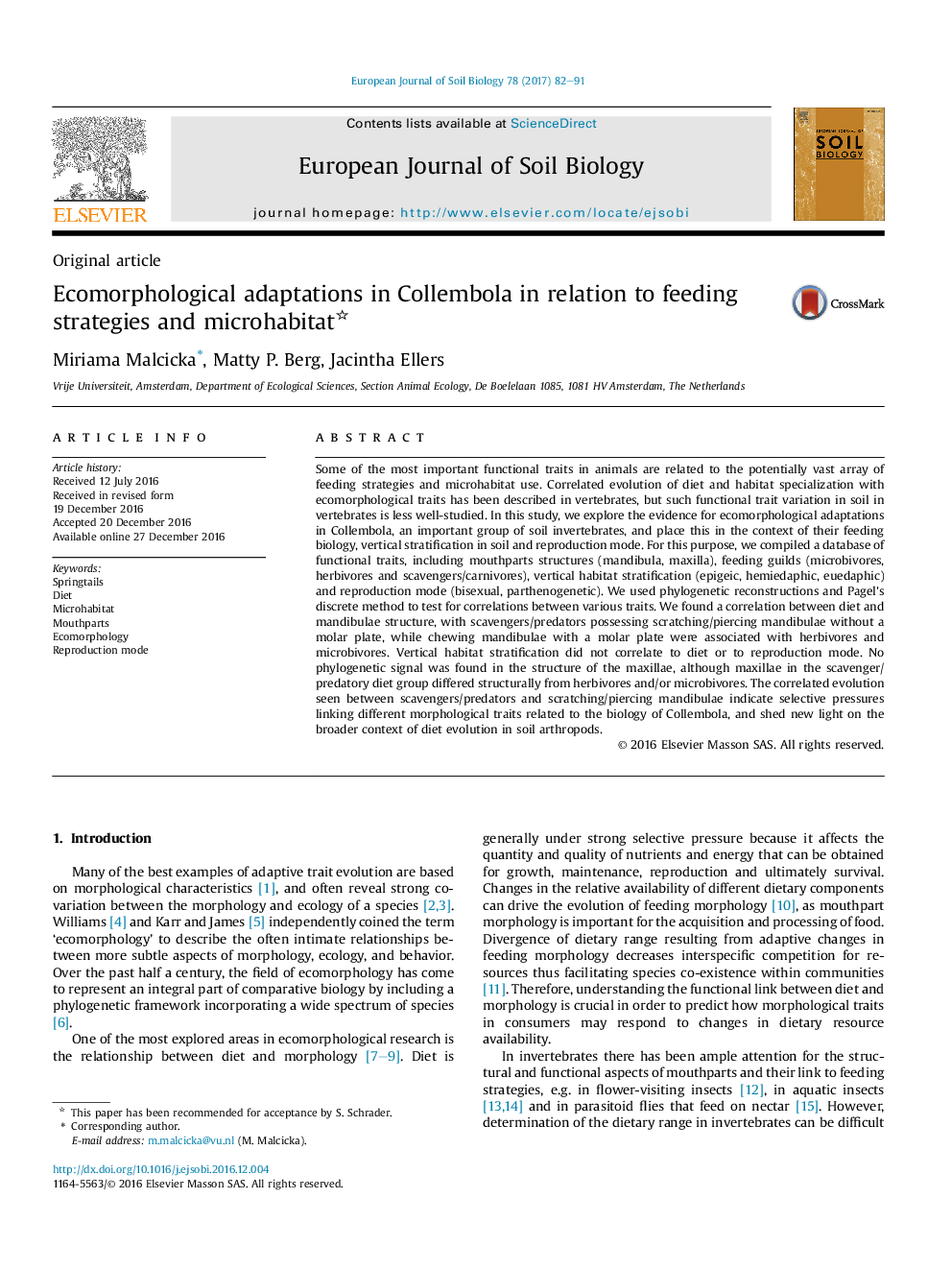| کد مقاله | کد نشریه | سال انتشار | مقاله انگلیسی | نسخه تمام متن |
|---|---|---|---|---|
| 5744241 | 1618114 | 2017 | 10 صفحه PDF | دانلود رایگان |

- Mouthpart morphology, diet,and soil habitat specialization often evolve as correlated traits.
- We use a phylogenetic approach to study correlated trait evolution in Collembola.
- A positive correlation was found between diet and mandibulae structure.
- Diet was not correlated between vertical habitat stratification and or reproduction mode.
Some of the most important functional traits in animals are related to the potentially vast array of feeding strategies and microhabitat use. Correlated evolution of diet and habitat specialization with ecomorphological traits has been described in vertebrates, but such functional trait variation in soil in vertebrates is less well-studied. In this study, we explore the evidence for ecomorphological adaptations in Collembola, an important group of soil invertebrates, and place this in the context of their feeding biology, vertical stratification in soil and reproduction mode. For this purpose, we compiled a database of functional traits, including mouthparts structures (mandibula, maxilla), feeding guilds (microbivores, herbivores and scavengers/carnivores), vertical habitat stratification (epigeic, hemiedaphic, euedaphic) and reproduction mode (bisexual, parthenogenetic). We used phylogenetic reconstructions and Pagel's discrete method to test for correlations between various traits. We found a correlation between diet and mandibulae structure, with scavengers/predators possessing scratching/piercing mandibulae without a molar plate, while chewing mandibulae with a molar plate were associated with herbivores and microbivores. Vertical habitat stratification did not correlate to diet or to reproduction mode. No phylogenetic signal was found in the structure of the maxillae, although maxillae in the scavenger/predatory diet group differed structurally from herbivores and/or microbivores. The correlated evolution seen between scavengers/predators and scratching/piercing mandibulae indicate selective pressures linking different morphological traits related to the biology of Collembola, and shed new light on the broader context of diet evolution in soil arthropods.
Journal: European Journal of Soil Biology - Volume 78, JanuaryâFebruary 2017, Pages 82-91